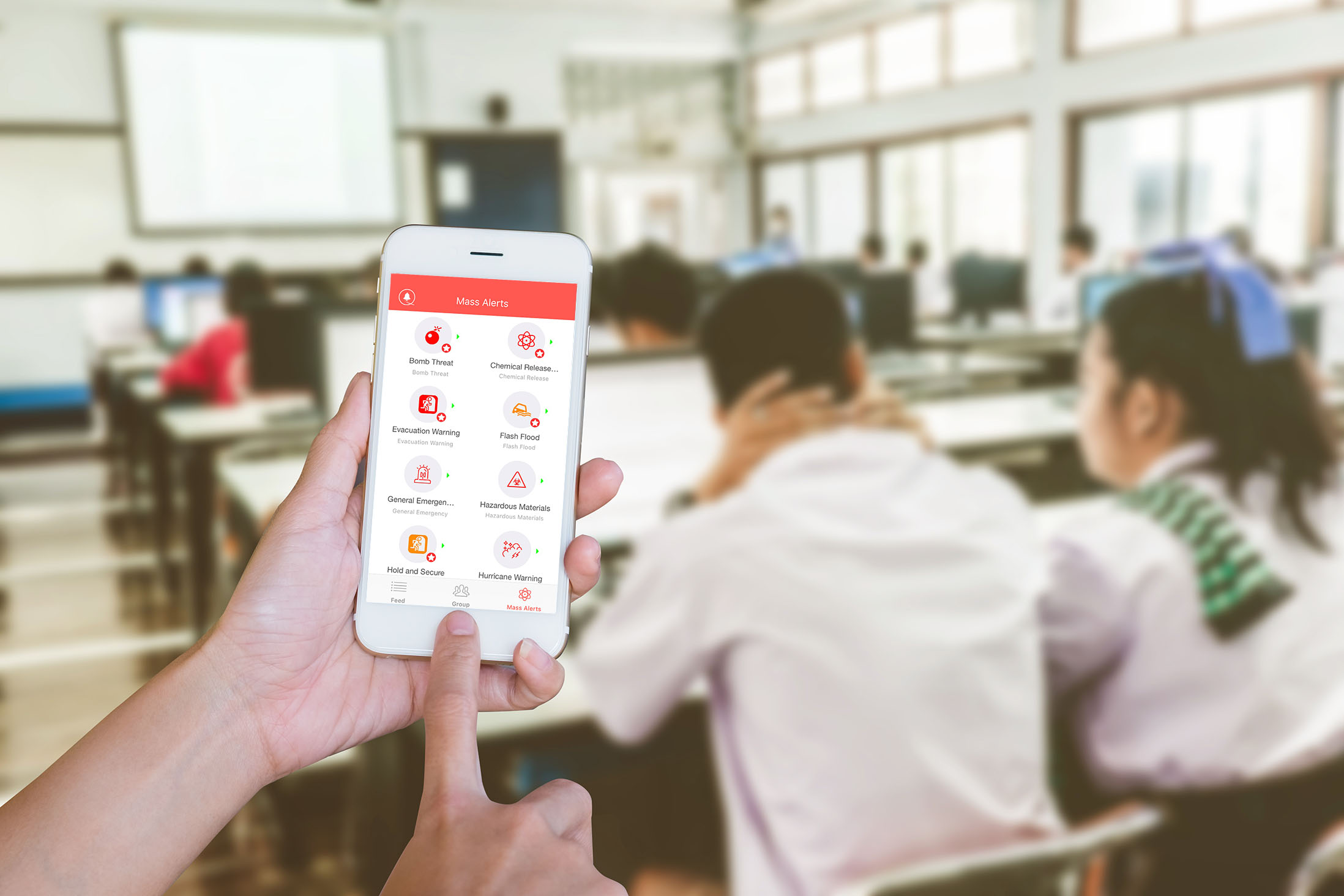5th March 2019
Let’s Arm Teachers … with Smart Mobile Technology

In the wake of the Parkland shooting in 2018, a number of ideas were floated about as to what to do with school shootings — how to protect students and teachers during such dangerous emergencies. One of the ideas presented was to arm teachers with weapons. As you might expect, the idea was roundly received with conflicting responses.
On one end of the spectrum you have people who believe that more guns in responsible hands is the right answer. On the other end, you have those who will argue — just as passionately — that fewer guns is the right answer.
Ironically, I believe that arming teachers is exactly the right answer … but the weapon we should arm them with is smart mobile technology.
Let’s look back for a moment, some thirty-plus years ago. The world changed for us in the late twentieth century with the advent of a new type of telephone — one without a wire — that we could carry anywhere.
However, the world turned on its edge in the early 2000’s when that ‘wireless telephone’ became smart; when it became more than just a telephone. When it became more than just a device that placed and received phone calls. Then applications started appearing for this smart device, and everything changed.
Except for our schools.
Think about it — in your personal life, this increasingly powerful device does darn near everything.
It notifies you of important ‘changes’ in your environment — changes such as bank balance notifications, new pictures available from a friend, weather warnings and updates, when someone is ringing your doorbell while you are away. It plays your music, it plays your movies, it streams your events, it takes your photos, it creates and shares videos, it maps out routes of travel, it buys your movie tickets, your concert tickets, it makes reservations at restaurants, it makes call-ride reservations, it moves money from one account to another…
And that’s just in our casual, personal lives. Consider other work industries. Hospitals use mobile technologies to communicate patient information with patients — whether it is blood test results or a simple appointment reminder — and to schedule staff. Similarly, airlines use mobile technologies to interact with pilots and flight attendants for scheduling changes and updates and for allowing customers to make and change reservations. Banks use mobile technologies to communicate balance information to account holders, to allow account holders to transfer monies, to pay bills . . .
But in schools, particularly when it comes to safety . . . the experience at schools is sorely lacking in innovations such as these, when that is precisely the place that needs it the most. We need to correct this, and quickly.
If a mobile phone can allow a son or daughter who has a flat tire across the city to alert a parent of the situation, and their exact location . . . then that same mobile phone should also be able to allow a school’s bus driver to alert the school when a bus breaks down with students on board, complete with GPS location and a visual confirmation that the students are all safe. And it can do this — today — if schools desire.
If a mobile phone can notify me when an amber alert has occurred somewhere in my city . . . then that mobile phone should also be able to alert a teacher if something dangerous is happening on their campus. And this, too, can be done easily today.
If a teenager can use a mobile phone to ‘check in’ with one touch, to alert hundreds of friends that she is walking into a movie theatre, then a teacher should be able to — with one touch — alert hundreds of people on a campus if something dangerous is occurring. This is done every single day in other industries. Schools can do it also.
If a mobile phone can show an employee at work who is ringing the doorbell at home, or who might have taken a package from the doorstep . . . then that mobile phone should also be able to show a teacher huddled in lockdown with students what is happening in the hallways outside. This too, can be easily accomplished today.
With one touch of an icon, we as consumers can do so much — to have fun, to perform tasks, to protect ourselves — and this mindset needs to be adopted in our schools, as it has in so many other industries.
One touch can securely connect a teacher with the parents of that classroom. One touch can launch a lock-down alert because of an intruder. One touch can launch an intelligent evacuation because of a chemical accident. One touch can notify parents that an early-closure is in effect. One touch can notify a school nurse of a medical emergency in a classroom. One touch can put a superintendent in touch with every classroom in the district across tens or hundreds of schools.
One touch can do a lot. But we have to start thinking differently in our schools. We have to start having the same expectation of accurate and simplified communication in schools, as we do at home, or in social settings. Because the technology to do revolutionary things to create safer schools is here — today — waiting for adoption.
This is going to require a mindset change for many of our schools. Many school administrators I speak with are wary of asking their teachers and parents to download a simple mobile client . . . when those same teachers and parents go home and download similar clients from their banks, their churches, their closest movie theaters, their favorite television stations, their favorite retail stores . . . and literally millions of games they play.
Yes, we need to arm our teachers with this technology — and fast. We can help make schools a lot safer, a lot easier to work with, and a little more fun. And the time to do so is now, when we are raising a generation of lockdown-students who are amazingly proficient with mobile technologies . . . and are depending upon their schools to be also.

Kevin Brown,
Chairman & Co-Founder Quicklert, Inc